Indian Oak Tree: Barringtonia acutangula Uses, Research, Side Effects
Hijjala- Barringtonia acutangula Gaertn. is an Ayurvedic herb used for the treatment of fever, diarrhea, intestinal worm, cough, dyspnea, and cases of poisoning.
Botanical name – Barringtonia acutangula Gaertn.
Family– Lecythidaceae ( Hijjala kula)
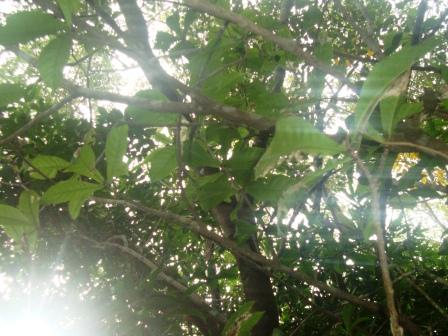
Table of Contents
Vernacular names
Hijjala – Names in different languages:
English name- Indian oak tree, Mango-pine, Barringtonia, Freshwater Mangrove, Indian Oak, Indian Putat
Hindi name- Samudraphal
Kannada name – Samudraphala
Bengali name- Hijala
Gujarati name- Samudraphala
Telugu name- Kanagi
Tamil name- Samutrapallam, ram, Kadambu, Kadappai, samudra pazham
Oriya name – Nijhira
Marathi name – Tiwar, Newar, Sathaphala, Samudraphala
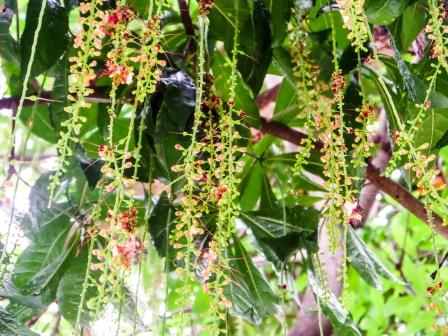
Sanskrit synonyms
Sanskrit Synonyms of Freshwater Mangrove:
Samudraphala (Found along the sea coast), Nichula, Vidula
Hijjala is a medium sized tree growing to a height of 10-12 m and up to 2 m in diameter. It is found all over India, Srilanka and other southeast Asian countries. The bark of the tree is dark brown in color. The fruit of the tree resembles wild cardamom pods.
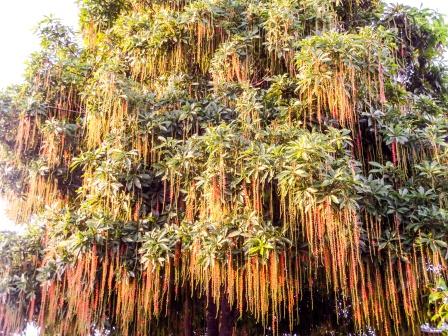
Classical categorization
Charaka- Vamanopaga, virechaneeya
Sushruta- Urdhwabaghahara gana
Bhavaprakasha- Guduchyadi varga
Raja Nighantu- Shalmalyadi varga
Systemic classification
Kingdom: Plantae
(unranked): Angiosperms
(unranked): Eudicots
(unranked): Asterids
Order: Ericales
Family: Lecythidaceae
Genus: Barringtonia
Species: B. acutangula
Properties, part used, dosage
Medicinal properties of Hijjala:
Guna (Qualities)-Laghu (light to digest), Ruksha (Dry in nature)
Rasa (Taste) – Tikta (Bitter), Katu (Pungent)
Vipaka- Katu (Undergoes pungent taste conversion after digestion)
Veerya (Potency)-Usna (Hot)
Karma-Vata hara (Subsides the vitiated Vata dosha), Vishaghna (controls the visha in the body)
Part used: Fruit, Leaf, Steam bark, Root
Dosage of Indian Oak Tree:
Fruit powder 0.5-1 g
Fresh juice 10-20 ml (3-6 g for emesis – Vamana Panchakarma therapy)
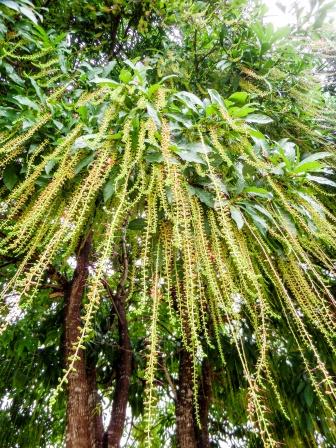
Chemical composition
Chemical composition of Barringtonia acutangula :
The bark of Barringtonia acutangula contains about 16% tannins and opoid painkillers. It also contains 3,3′-dimethoxy ellagic acid, dihydromyticetin, gallic acid, bartogenic acid and stigmasterol, triterpenoids.
The fruits contain triterpenoid saponinswhich are haemolytic in nature. It also contains glucoside, barringtonic acid and barringtogenol.
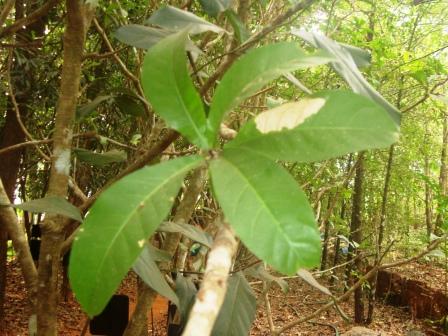
Uses of Hijjala
- The powder of the bark is used as ‘Nasya’ (Nasal errhine) in the treatment of headache.
- The seeds of Barringtonia acutangula are made into paste and used as collyrium in the diseases of the e
- The plant is used for emesis and purgation in the treatment of vitiated Kapha and Pitta dosha respectively.
- The fresh juice of the leaves of Barringtonia acutangula is given with honey in a dose of 10-12 ml to treat diarrhea.
- The powder of the bark of Hijjala is given with sugar candy in a dose of 8-10 g to treat retention of urine.
- The root of Barringtonia acutangula is given in a dose of 8-10 g in divided dose to treat fever, splenomegaly.
- The root of the plant is given in dose of 5-6 g to treat cases of spider poisoning and insect bites.
- The decoction of the bark of Barringtonia acutangula is given in a doses of 40-50 ml in divided dose to purify blood and treat skin diseases.
- The paste of the seeds is applied to treat pain and localized swelling.
- The cold infusion of the leaves is used to treat intestinal worms in a dose of 25-30 ml.
- The seed extract is anti- tumor in nature.

Ayurvedic formulations
Formulations containing Hijjala:
Katakakhadiradi Kashayam: Katakakhadiradi Kashayam is an Ayurvedic medicine, in the form of decoction, used in treating diabetes. It is also available in capsule form.
Maha Panchagavya Ghritam: It is an Ayurvedic medicated Ghee which is useful for the treatment of anemia, piles, jaundice and in mental disorders like epilepsy, insanity. The formulation is used commonly for oleation before undergoing purgation therapy (Virechana).
Interaction with medicines, supplements
Can this be used while taking Homeopathic medicine?
Yes. This product does not react with homeopathic medicine.
Can this medicine be continued while taking supplements like multivitamin tablets, Omega 3 fatty acids etc?
Yes. Generally, this product goes well with most dietary supplements. However, if you are taking more than one product per day, please consult your doctor for an opinion.
With western medicines
Seek your doctor’s advice if you are taking this product along with other western (allopathic / modern) medicines. Some Ayurvedic herbs can interact with modern medicine.
If both Ayurvedic and allopathic medicines are advised together, then it is best to take Allopathic medicine first, wait for 30 minutes and then take the Ayurvedic medicine.
Research, Side effects
Research articles on Hijjala:
Apoptic induction: Barringtonia acutangula L. was selected based on its medicinal properties, which is well documented. The plant was subjected to a series of assays to evaluate its anti-cancer potentials. The preliminary screening by NO assay and MTT assay indicated the free radical scavenging and anti-cancer activity of the plant in the methanol and ethyl acetate extracts of S. colais and ethyl acetate extract of B. acutangula against Colon cancer cell lines Colo320. Further, DNA fragmentation assay attributed the cytotoxicity of the plant extracts to apoptosis.
Cure for many diseases: This plant is traditionally used for the cure and treatment of many ailments like hemolytic disease (various diseases of blood), abdominal colic, lumbar pain, malaria, syphilis.
Side effects: There are no known side effects with this herb.
Author:
Dr.B.K.Prashanth M.D (Ayu), Ph.D. E mail: [email protected]
Sthanika karma (Systemic Acton)
External use
Seed has Analgesic, Scraping and Sirovirechana action. Powder is used for nasal instillation in the head and neck. Seed powder is indicated in Pain in the flanks, joint disorders, etc. In eye diseases and in jaundice it is used for Collyrium.
Internally
Digestive system – Fruit induces vomiting and purgation. Indicated in Helminthiasis, ascites Leaf has absorbent action, and this along with honey is indicated in Amatisara. (Diarrhea due to indigestion). Stem bark is used in Amoebic dysentery.Circulatory System – Blood purifier, indicated in blood borne diseases
Respiratory system – Expels out kapha dosha, Indicated in cough, Asthma etc.
Excretory system – Increases urine production, In UTI its powder can be administered with Nirgundi and sugar.
Reproductive system – Indicated in Obstructed labor and in Dysmenorrhea. Helps to constrict uterine muscles.
Skin – Indicated in skin disorders
Tapakrama – Root is indicated in Vishamajvara and in Splenomegaly.
Satmikarana – Anti poisonous. Indicated in Diabetes












4 comments
Sajid Ahmed
Dear Sir,
“The seed extract is anti- tumor in nature.”
Which type of tumor normal or critical disease tumor
Could you more about the quoted line or any helpful article reference
Thanx
Dr J V Hebbar MD(Ayu)Author
The ethanolic leaf extract of Barringtonia acutangula has
anticancer activity as it inhibited the HepG2 cell growth. – Source –
The cytotoxic effect of fungal endophyte isolated from
Barringtonia acutangula was tested by the MTT assay
which showed the effect of its secondary metabolites on
the cell viability in HT29, human colon cancer cell line. –
The fungal extract from endophytic fungi EFB01 & EFB02
showed 52% and 40% cyto-toxicity respectively when
compared to the metabolite from EFB01 – Lakshmi PJ, Selvi KV, Anticancer potentials of secondary
metabolites from endophytes of Barringtonia acutangula
and its molecular characterization, Int. J. Curr .Microbiol.
App. Sci 2(2), 2013, 44-45.
D.N.O'Donovan
I should like your permission to reproduce on my blog (a non-profit one), the photo just above your heading “Uses of Hijjala”. If you permit, I’ll take a screen shot, and label it credit to you and a link to this page.
Dr J V Hebbar MD(Ayu)Author
No. Sorry